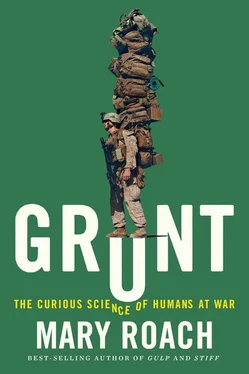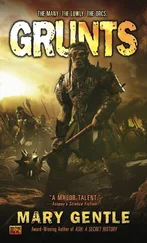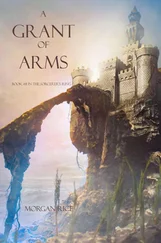14. FEEDBACK FROM THE FALLEN
How the Dead Help the Living Stay That Way

IT IS NOT THE blood in news photos of people shot dead or killed by bombs that gets to me. It’s the clothing. Here’s a man who got up in the morning and went to the closet with no inkling he was pulling on his socks for the last time, or adjusting his tie for the coroner. The clothing becomes a snapshot of a person’s final, poignantly ordinary day on Earth. You see at once the death and the life. In autopsy photographs of US military dead, you also see what came between the two. Defense Department policy is to leave all life-saving equipment in place on a body. You see the urgent work of medics and surgeons—the pushing back at death with tourniquet and tube.
In military autopsies, medical hardware is examined alongside the software of organs and flesh. The idea is to provide feedback to the men and women who worked on these patients. Did, say, the new supraglottic airway device work the way the manufacturer promised? Was it placed correctly? Could anything have been done differently? The feedback happens via a monthly combat mortality teleconference, part of the Armed Forces Medical Examiner System (AFMES) program Feedback to the Field. In the past, solid, quantified feedback took the form of published papers. In the time it takes to have a study peer-reviewed and published in a medical journal, a lot of lives can be lost. This is so much better.
The System comprises two low tan brick buildings, mortuary and morgue. The mortuary being the one with the lovelier landscaping. Which is not to say that the morgue is bleak or depressing. It isn’t (certainly not by comparison with what you have driven through to reach it: Dover Liquor Warehouse, Super 8 Motel, Chik-fil-A, Applebee’s, Adult Probation and Parole, McDonald’s, Wendy’s, New Direction Addiction Treatment, Boston Market, and a giant blow-up rat advertising extermination services). A walkway connects the two buildings, but an ID badge is needed to open the door from one into the other. You don’t want family members to take a wrong turn and end up in the autopsy suite.
Or, this morning, the conference room. The 7th Combat Mortality Conference is just getting under way. Eighty teleconnected individuals are taking part: thirty or so here at AFMES, about an equal number phoning in from Afghanistan and Iraq, and a few in San Antonio, Texas, at the US Army Institute of Surgical Research. They interact by audio only. There is a video screen, but it is used to display not the speakers but the soldiers being spoken about.
The body in the photograph on the screen is on its back. Black bars have been added over the eyes and groin. I want a third one to hide the feet, which are flopped strangely, wrongly, off to the same side. They’re like feet in an ancient Egyptian frieze or under the bedding at one of those hotels where the maids aggressively tuck the sheets. A man speaking from Afghanistan recites the prehospital care scenario. “CPR was in progress when he arrived. Treatment included JETT tourniquet, sternal intraosseous IV, plasma, two doses epinephrine. Upon arrival at the medical treatment facility, no cardiac activity was noted. CPR was ceased. Over.” Over is of course the military man’s habit of denoting the end of a radio communication, not, as I at first heard it, a dramatic editorial flourish.
The medical examiner (or ME) who performed the autopsy delivers his summary next. “…Extensive head injuries, skull fractures. Laceration of the brain stem. Hemorrhages. Multiple facial fractures. Extensive injuries to the upper extremities. Also fractures of both his tibiae and fibulae. Facially again, his maxilla and mandible are fractured.” The blood has been cleaned away, so most of what I’m hearing doesn’t register visually. What registers is this: His mustache is on crooked. It calls to mind the old slapstick gag—the false mustache slipping its glue and hanging askew on the actor’s face. It wasn’t that funny then, and it’s very much not so now.
Like a sensitive editor, the medical examiner begins his feedback with positives. “Crike was performed adequately and perfectly placed.” Crike is short for cricothyrotomy—puncturing an emergency airway through the cricothyroid membrane. The ME moves on. “Placement of JETT.” The Junctional Emergency Treatment Tool is a new type of tourniquet for compressing the femoral arteries at the junction of the leg and the torso. “JETT was possibly moved in transport…” This is polite shorthand for the fact that it is not where it should be. Great care is taken at these meetings with how things are phrased. The medical examiners don’t want to lay blame or criticize the people who provided the care. Rather than refer to them by name or classification, they say “the user of the device.”
A man at the army surgical research institute has something to add. “It’s a rookie mistake,” he begins, “to place the JETT too proximal. The femoral artery is more easily compressed slightly distal”—farther out—“to where this device was placed.” He backtracks. “Though it’s possible the device moved proximally in transit.” He can’t help adding: “Though it’s not likely that happened. I’ll send the instructions to everyone. Thanks.”
The next case is easier to look at, too easy. There shouldn’t be a situation in which you find yourself admiring the build of a dead person. When all is right with the world, corpses look ancient, weak, worn out. You know at a glance there was little living left to be done with that body. “You can see the sternal IO has been placed properly,” the ME is saying. IO stands for intraosseous. It’s the cousin of IV—intravenous. IO refers to a blood transfusion via the bone marrow rather than a vein. When someone has lost a large volume of blood, the vessel walls lose the tautness that makes it possible to find them and pierce them with a needle. It’s the difference between poking a pin into a newly inflated balloon and one that’s kicking around in the corner a week after the party. The bone—often the sternum, which puts out a lot of blood—is breached via a small drill or gun, or a determined twisting by hand if the batteries are low.
In days past, this man’s glorious pectorals could have been a party to his demise. One of the pieces of feedback AFMES gave to the field was this: The pectoral muscles of the modern, weight-lifting soldier or Marine are often so bulked up that the needle inserted into the chest to relieve air pressure in cases of collapsed lung—if, say, the lung is shot through and air is building up outside of it—isn’t long enough to clear the muscles. This was the case in about half of all male patients. Because of Feedback to the Field, longer needles are used on buffer soldiers.
The last case is a woman shot from behind. The ME is narrating. “The larger of two penetrating gunshot wounds crosses through the heart into the right lung…. Proper location of sternal IO. Proper location of tibial IO.” There isn’t much else to say. There wasn’t much else to be done.
The woman’s underwear has been left on. It is pale yellow [61] Female soldiers, unlike males, receive vouchers to shop for their own underthings. The US military is gearing up to buy uniforms embedded with photovoltaic panels— shirts that can recharge a radio battery —but it is not up to the task of purchasing bras for female soldiers. “I’ve done that sort of shopping with my wife,” said an Army spokesman quoted in Bloomberg Business . “It’s not easy to do.”
and plain. The image guts me. It’s the clothing thing—the innocence of the unsuspecting. In a second slide, the body lies facedown. The back side of the underwear, I notice, is pink. It takes a moment to process why. Yellow plus blood equals pink.
Читать дальше













